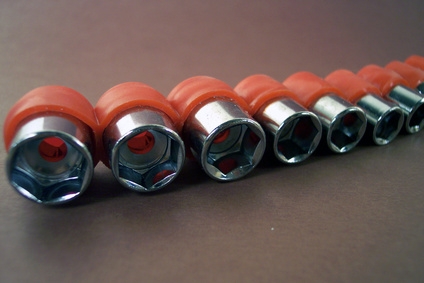
Inline fuel filters are used in fuel injected vehicles to trap sediment and particles that may damage expensive fuel injection components. Replacing the inline fuel filter in your vehicle is part of the preventive maintenance required to keep your car or light truck running properly. The basic process for replacing the inline fuel filter is the same for most vehicles and can be done by the average home mechanic in less than an hour in most cases.
Relieve fuel pressure by removing the fuel pump fuse or relay. Start the engine and allow it to run until it stalls. Turn the ignition key off and replace the fuse or relay.
Refer to the service manual and identify the location of the fuel filter. If it is under the vehicle (most are), raise and support the vehicle using wheel chocks, a floor jack and jack stands. If the filter is under the hood it is not necessary to raise the vehicle.
Locate the filter and position a drain pan under it.
Remove the fuel lines from the ends of the filter. If the lines are attached by quick disconnect fittings, use a fuel line disconnect tool. To use this tool, slip the tool over the fuel line and push it into the quick disconnect fitting to release the locking mechanism in the fitting.
Replace the copper gaskets used to seal the line when it is bolted onto the new filter or replace the rubber o-ring on the ends of the lines if they are screwed into the filter, depending on the style of fitting. New gaskets come with the new filter.
Loosen or remove the filter bracket that attaches the filter to the frame of the car using a socket and ratchet or a wrench. Install the new filter in the reverse order of removal.
Prime the fuel system by turning the ignition key off and on a few times. Check the fuel line connections on the filter for leaks. Start the engine and check again for leaks before lowering the vehicle off the jack stands and test driving.